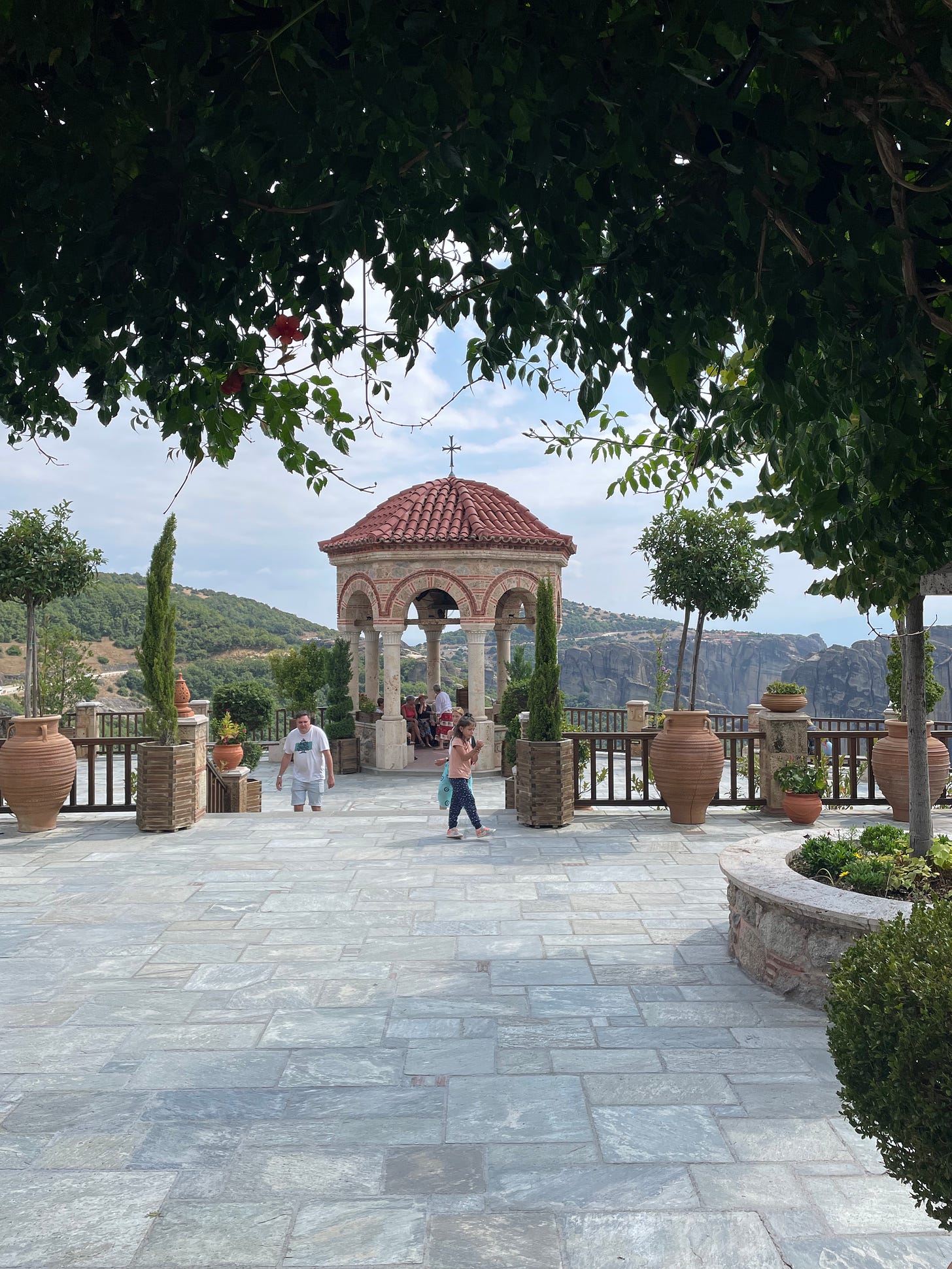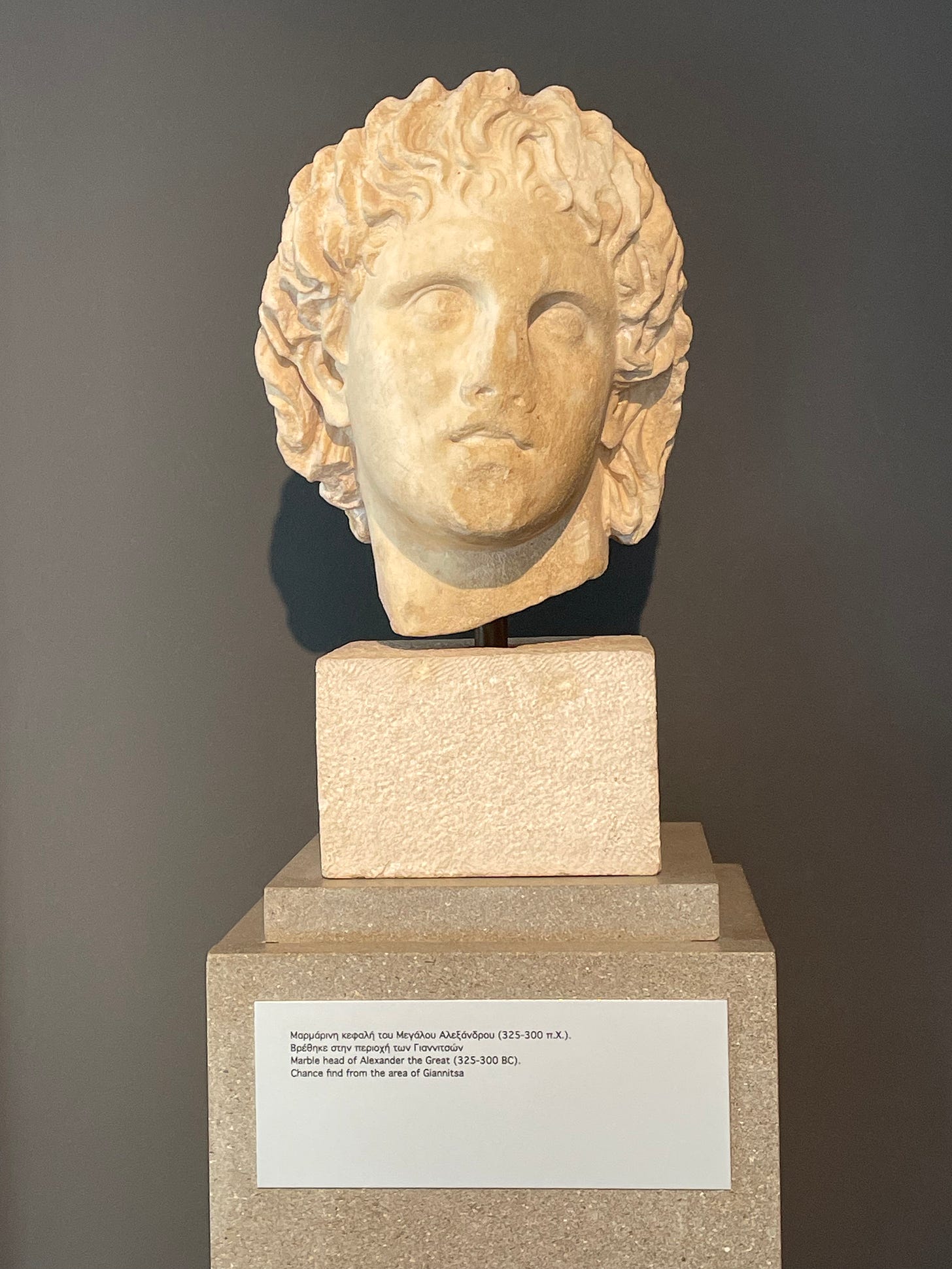Quote of the week
My imagination is a monastery and I am its monk.
John Keats
Hello,
A report from Greece, a place where the temperatures are still around 30C/86F. Last week I left you in the mountains of Vikos. From there we went to Meteora, the rock formations which host a number of Eastern Orthodox monasteries.
Meteora
It is an impressive site and view when entering into the village of Meteora. The cliffs are visible from all around. The area is famous for the monasteries built on top of the rocks. Between 13th and 14th centuries, twenty-four monasteries were built, of which six remain today.
Some are more accessible than others, but most of them have between 150 to 300 steps to climb to reach the top. Some of the very steep, some less so. Martin visited four of them, and I did one. Needless to say, the easiest one to reach, although I had to climb a few steps to reach the entrance.
In the old days the only access point was via a basket that was winched up and down from the top. Mostly used to bring food for the monks. I think most of them stayed up there for their whole life. We walked around the area enjoying the views, and the church which was full of paintings from the religious life. They were very clear in their colours, so obviously restored. It was a long time since I visited an Orthodox church, and had slightly forgotten the feeling.
The Monastery of the Holy Trinity was used as location in a James Bond movie, For Your Eyes Only. But it has also been used as location for a lot of other movies. It definitely adds something to a story.
Coming back to our camping we could continue to enjoy a view of the rocks from there. Quite amazing swimming around the pool and looking up at the rocks. Absolutely worth a visit if you are in the neighbourhood.
Pella
Founded at the beginning of the 4th century BC by Archelaus I as the new capital of Macedonia. It was the birthplace of Philip II in 382 BC and of his son Alexander the Great in 356 BC. It quickly became the most important city in Macedonia. The city was sacked by the Romans in 168 BC, and in about 90 BC it was destroyed in an earthquake.
We started our tour with a newly discovered private tomb by a noble ancient Macedonian family, accidentally found by a farmer in 2006. It dates from the 2nd or 3rd century BC, and inscriptions and painted sculptures have survived. From there we took a look at the archeological site (in about 38C/100.4F) and could enjoy the mosaic floors found there. Not lingering too long on the plain we went to visit the museum.
Before the museum we needed something to eat. We found a lovely restaurant, The Lemon, full of local people, so we gathered it must be good. And it was. Sitting under the vine leaves, in the shade enjoying a Greek salad and some tsatsiki, with a cold drink. How much better can it be?
Ready for the museum, which is a rather new building. I was expecting more of Alexander the Great, but there was hardly anything there, except a few maps showing his conquering of the world. And, the famous statue of him. Alexander was tutored by no other than Aristotle until he was 16 years old. By the age of 20 he became the ruler when his father died, and started his conquest of the world.
A beautiful museum, full of the finds from the site. Especially one section was amazing, with one vitrine with helmets, swords etc from the military side of life, full of golden decorations. The other vitrine held artefacts from the female side of life, jewels, combs etc, also decorated in gold.
That is all for this week.











Så vacker natur. Neder i norra Grekland ?
Är det i